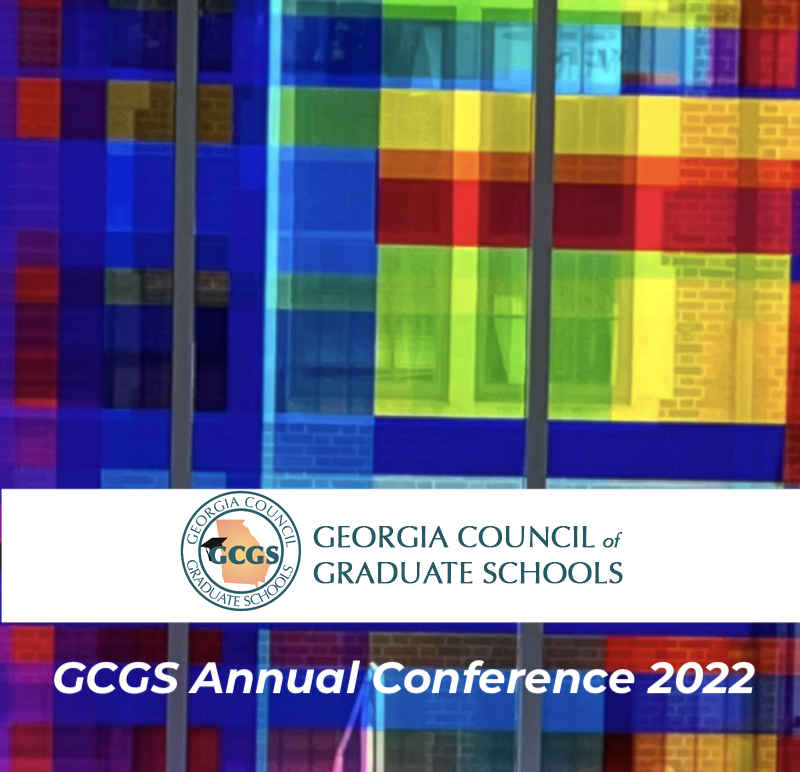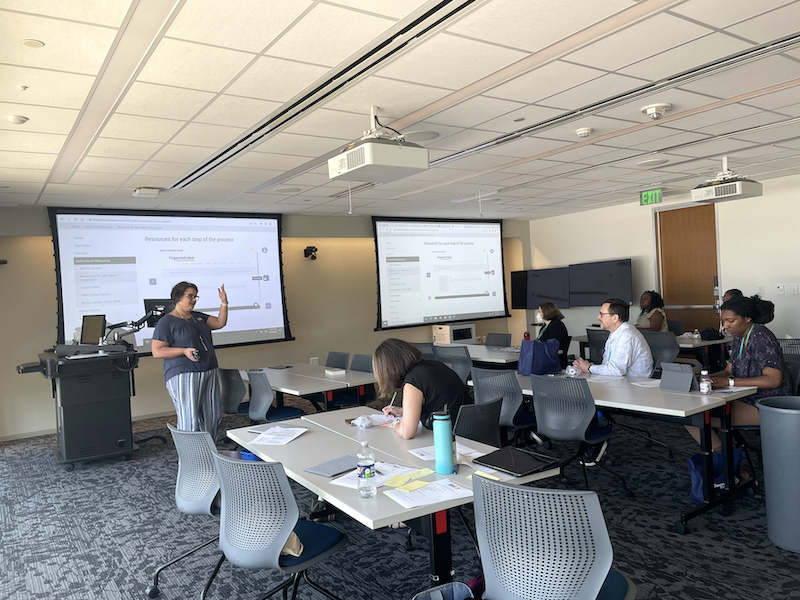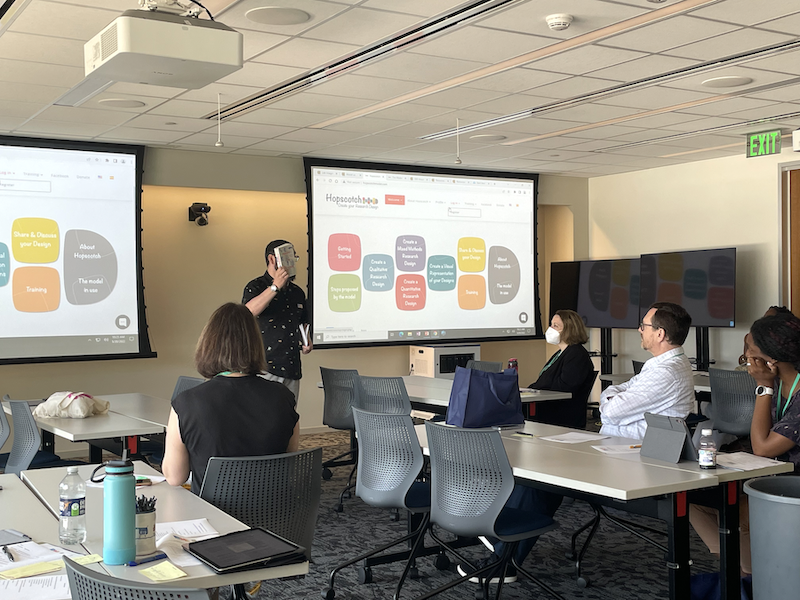Presentation at GCGS 2022

Presentation at the Georgia Council of Graduate Schools Spring Conference 2022
Georgia Institute of Technology (May 20, 2022) — Today (2022, May 20), members of the Interactive Research Methods Lab have presented the paper titled "Hopscotch and the Interactive Research Methods Lab," at the Georgia Council of Graduate Schools Spring Conference 2022.
Abstract: The presentation has introduced participants to the Interactive Research Methods Lab
(IRML), an initiative in the Bagwell College of Education at Kennesaw State University
that offers an innovative space for students and faculty to collaborate in personalized
instruction in and practical experience of generating core qualitative, quantitative,
and mixed-methods research designs, using Augmented Reality interactive contents (ARC).
The IRML provides both physical and virtual interactive spaces. The physical space
presents an itinerary organized around the nine steps of Hopscotch. Each step is placed
on a customized decal on a dry-erase surface, where users can write down ideas and
make decisions based on the information provided via original augmented reality contents.
The IRML's virtual space includes a 360° virtual tour that replicates the physical
space. The system used to create the virtual lab space allows the seamless integration
of the lab into Desire2Learn (D2L), the content management system used by our institution.
As a result, the IRML can be used as an embeddable resource for faculty using D2L
to teach research methods courses or any other aspect of research (literature review,
article critique, etc.), allowing online students to benefit from the lab remotely.
In addition to the virtual space of the lab, the IRML Team has developed and will
share instructional materials: a) a set of guides and resources curated by our graduate
research librarian for each of the nine steps of the process to expand on the information
and resources included in the multimedia AR contents; b) a set of instructional resources,
or didactic units, of
learning activities/lessons that instructors may implement with students “as is” or
collaborate with the IRML Team to create units to suit their instructional needs,
and; c) a “pocket version” of the lab which can be downloaded and printed by users
interested in having an “IRML-lite” version of the contents to use in their own classes
and projects.
To assess the impact of the IRML on the teaching and learning of research methods
and to identify opportunities to enhance the lab’s utility and effectiveness, an evaluative
case study was conducted. The following three questions drove the investigation: a)
Is the IRML helping faculty to teach research methods in an innovative and meaningful
way? b) Is the IRML helping students to understand the complexities involved in generating
quantitative, qualitative, and mixed-methods research designs in education? c) Which
aspects of the IRML need to be enhanced to better support the teaching and learning
of research design in education? Results will be shared.













